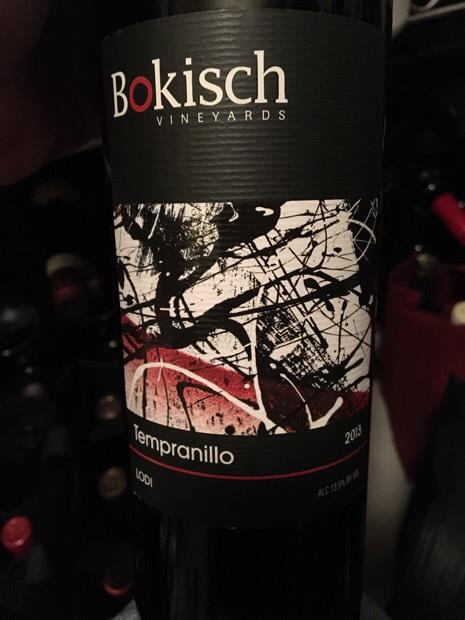
External search
Google (images)
Wine Advocate
Wine Spectator
Burghound
Wine-Searcher
Vintages
2021
2019
2018
2017
2016
2015
2014
2013
2012
2010
2009
2008
2007
2006
2005
2004
2003
2002
2001
N.V.
From this producer
Show all wines
All tasting notes
|
| Drinking Windows and Values |
| Drinking window: Drink between 2017 and 2022 (based on 12 user opinions) |
| Community Tasting History |
| Community Tasting Notes (average 88.5 pts. and median of 88 pts. in 4 notes) - hiding notes with no text | | | Tasted by VeniceCalif on 2/6/2020 & rated 88 points: About 5 years in bottle. Decanted off of a bit of sediment. Decent nose, showing black cherry, coffee, iron filings. Medium body with concentrated fruit and a touch of ink. Light tannins on the finish. Quite nice. (538 views) | | | Tasted by VeniceCalif on 12/22/2016 & rated 90 points: Decanted 30 mins. ahead. Medium-deep garnet color. Earthy Tempranillo nose combined with some woody notes. Medium body on the palate, lightened by firm acidity. Black cherry and blueberry flavors. Grippy finish with light tannins. A worthy effort by the state's leading Tempranillo producers, this wine could use some time in the bottle. Will check back in a couple. Wonderful QPR @ about $23. (1022 views) |
| Bokisch Vineyards Producer websiteTempranillo Varietal character (Appellation America) | TAPAS: Tempranillo Advocates, Producers and Amigos Society
Tempranillo is the premium red wine grape variety from the Rioja and Ribera del Duero region in Spain. Tempranillo's aromas and flavors often combine elements of berryish fruit, herbaceousness, and an earthy-leathery minerality. Being low in acidity and sugar content, it is commonly blended with Carignan (Mazuela), Grenache (Garnacha), Graciano, Merlot and Cabernet Sauvignon.
WineAccess
The varietal is at its best in top Riojas, where oak aging is employed to generate increased complexity and harmony. From the best sites, these wines can be remarkably concentrated with great aging potential. New wines from this region are darker, and more robust, with more dynamic primary fruit flavors than traditionally styled examples. These wines seem to reflect the influence of Spain's other key region for Tempranillo, Ribera del Duero. Regardless of style, Riojas tend to be medium bodied wines, with more acid than tannins. These wines generally feature Tempranillo blended with Garancha, Mazuelo, and Graciano. For these wines, there are three quality levels, which will appear on the label. Everyday drinking wines fall under the category of "Crianza", "Reserva" denotes more complex and concentrated wines, and "Gran Reserva" refers to the most intense wines, made only in the best years.
The same labeling scheme applies to wines from Ribera del Duero, which, like Rioja, is dominated by Tempranillo and shares similar blending grapes. Again, Ribera del Duero wines are generally darker and more powerful than the most traditional Riojas. These wines also generally see less oak treatment than Riojas. From Rioja, we like wines from Allende, Marqués de Cáceres, Montecillo, and Cune. In Ribera del Duero, consider Dominio de Pingus, Emilio Moro, Convento San Francisco, and Pesquera.
Pair older-style Rioja with simple meats like chicken, leg of lamb, and pork loin. However, the newer style of Rioja and Ribera del Duero works especially well with bolder meat dishes or an aged Spanish cheese like Manchego or Idiazabal. USAAmerican wine has been produced since the 1500s, with the first widespread production beginning in New Mexico in 1628. Today, wine production is undertaken in all fifty states, with California producing 84% of all U.S. wine. The continent of North America is home to several native species of grape, including Vitis labrusca, Vitis riparia, Vitis rotundifolia, and Vitis vulpina, but the wine-making industry is based almost entirely on the cultivation of the European Vitis vinifera, which was introduced by European settlers. With more than 1,100,000 acres (4,500 km2) under vine, the United States is the fourth-largest wine producing country in the world, after Italy, Spain, and France.California2021 vintage: "Unlike almost all other areas of the state, the Russian River Valley had higher than normal crops in 2021, which has made for a wine of greater generosity and fruit forwardness than some of its stablemates." - Morgan Twain-Peterson Central Valley The Central California Winegrowers (Official site) | Central Valley (California Wine Institute)Lodi Lodi Woodbridge Winegrape Commission | Lodi District Grape Growers Association |
|




